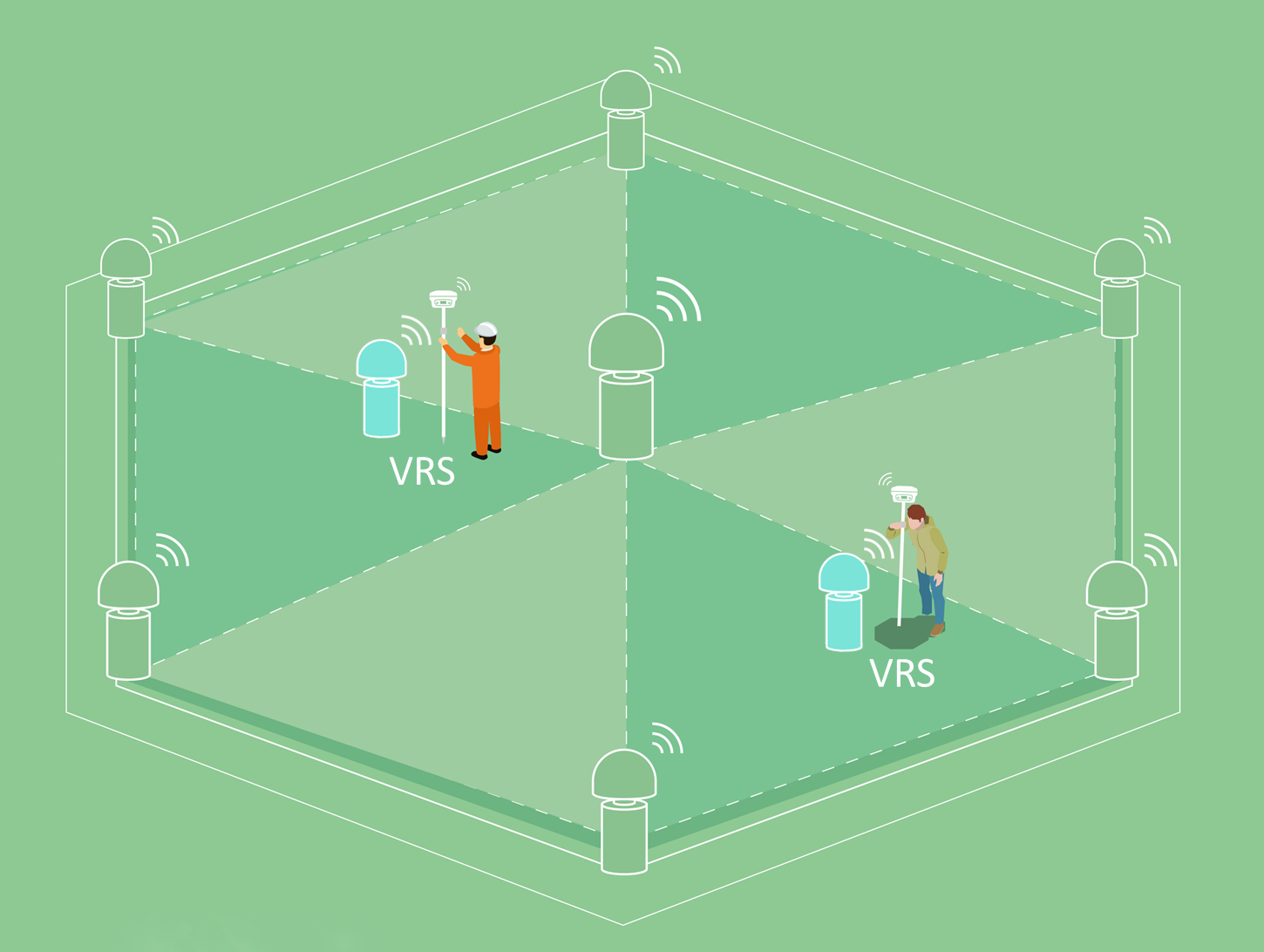Tech Chat | What is VRS and its advantages?
With the popularization of RTK technology in all walks of life, the global CORS coverage is getting higher and higher. Many surveyors, GISer, farmers, etc. started to use CORS instead of setting up RTK base stations themselves.
When selecting a mount point in CORS, in addition to normal mount points, you may often see VRS, nearest, etc. What do they mean and what’s the advantage of them?
Difference with normal mountpoint
Compared with normal mount points, the data transmission between CORS and rover in Nearest and VRS methods is bidirectional. After selecting a normal mount point, it will transmit differential data to Rover in one way. While Nearest and VRS require Rover to upload its location information to CORS first, and CORS will then transmit the corresponding differential data to rover according to its location.
Nearest
The Nearest method will automatically select the differential data sent by the base station closest to the Rover according to the location of the Rover. This method allows users to directly select the nearest base station without comparing different mount points, which is the most commonly used method in CORS.

VRS (Virtual Reference Station)
Different from normal base stations, VRS (Virtual Reference Station) technology will generate a virtual base station beside the rover within several meters, which can largely shorten the baseline distance and improve RTK accuracy.
To realize VRS technology, the CORS provider needs to set up at least 3 base stations in a certain area. Based on the coordinates and real-time observation data of each base station, the CORS software platform will solve the real-time error model of the area. And then "virtualize" a base station located around the rover according to relevant mathematical model algorithm and the obtained rover coordinates.

In the past, the cost of building & maintaining a CORS reference station was pretty high, so the distribution of CORS stations was relatively sparse. At that time, VRS technology was very important to reduce the RTK error caused by long baseline distance.
However, with the development of high precision GNSS industry, the cost of CORS station construction is gradually reduced, and the distribution of CORS is gradually dense. Since VRS has higher algorithm requirements for the CORS platform software, nearest has become more commonly used.
Learn more about SingularXYZ CORS solution.
https://www.singularxyz.com/SV100_CORS.html




